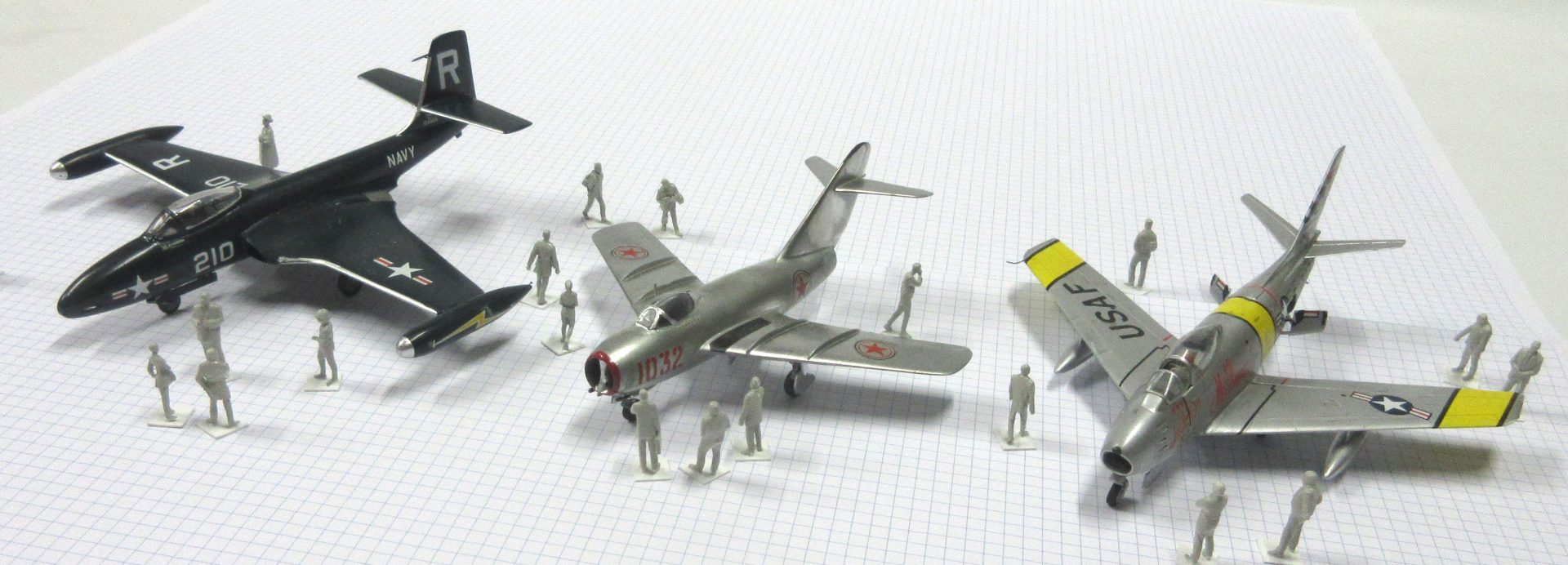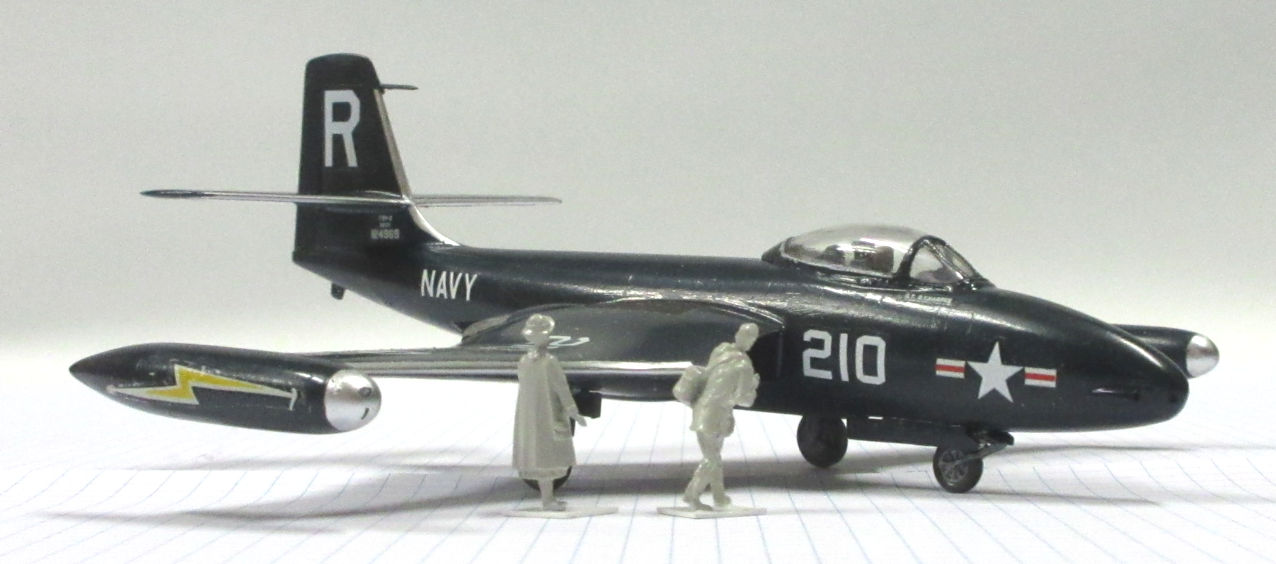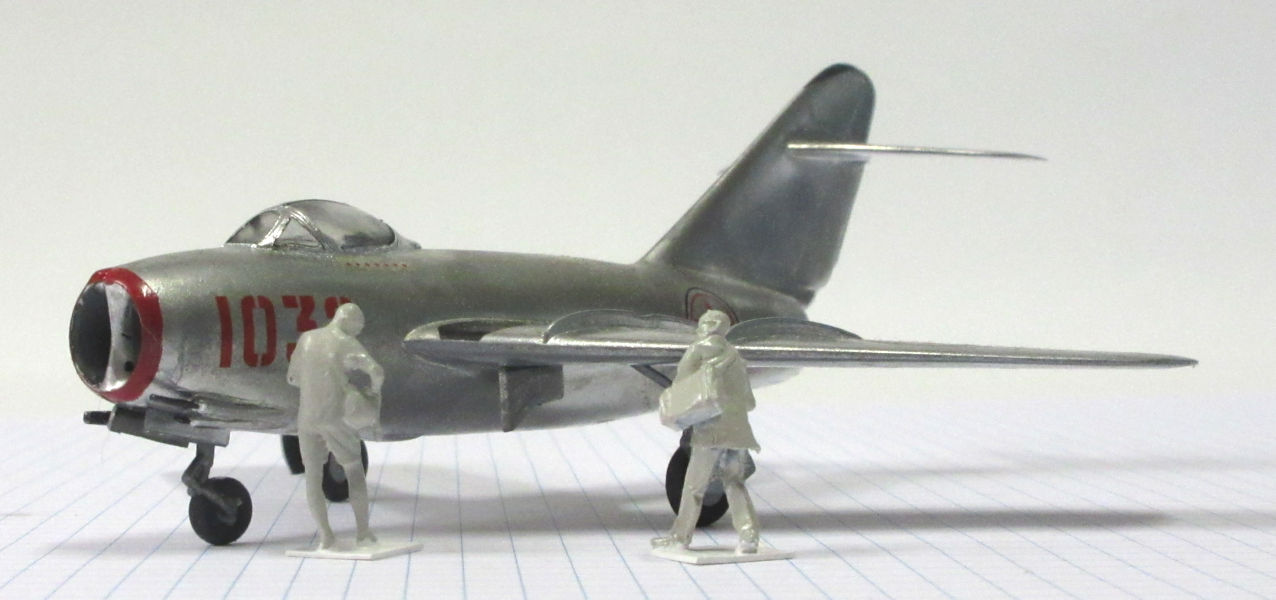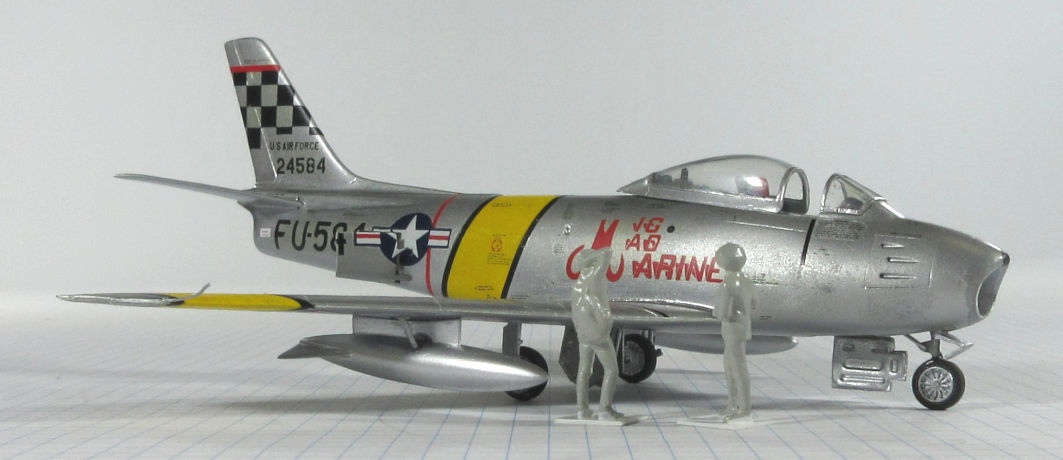Korean War fighters
McDonnell F2H-2 – MiG-15 – North American F-86F

The Korean War began in June 1950 when North Korea invaded South Korea. It went through several phases when each side was in the ascendance but eventually the war ground to a stalemate and an armistice was signed in July 1953. North Korea was supported by China and the Soviet Union and South Korea by a coalition of armed forces led by the United States.
The air war was also fought in phased. In the early months allied jet fighters outclassed opposition piston engined fighters but the arrival of MiG-15s in October 1950 gave them air superiority. This was countered by the arrival of the first United States F-86s in December. The MiGs were a little better than the F-86s until the F-86F arrived in Korea in 1953. Overall it is estimated that kill ratio of F-86s versus MiGs was 2:1. However, by engaging the MiGs the F-86s enabled other allied aircraft to attack ground targets much more effectively.
McDonnell F2H-2 in 1/72 by Airfix
This aircraft was McDonnell’s second jet aircraft for the United States Navy, entering service in 1948. Because of the Navy’s concern about flying swept wing aircraft from carriers it has a straight wing which limited its speed so it was not able to compete with MiG-15s in aerial combat. However, with F-86 engaging MiGs, Navy aircraft like the F2H proved to be effective ground attack aircraft.
I built this model using the Airfix kit which dates from 1980 and was reckoned to be very good in those days. However, I was a bit disappointed by it when I came to make it over three decades later. A Detail & Scale review is just as unenthusiastic. (I’d bought it new in the 1980s and only got around to making it in 2021, which is what kit collections are for.) There is a much better Pro Resin kit that is well regarded in the Modelling Madness review but it is expensive and probably hard to find. So, if I’d been looking for a F2H-2 kit this decade I would have gone for the Sword kit which comes in a couple of versions and is highly recommended. The detailed in-box review of the Sword kit in Hyperscale makes it look very attractive.
MiG-15 in 1/72 by KP
This aircraft combined German World War II aeronautical research with licence built British jet engines to produce one of the worlds first successful transonic fighters. The first ones flew in the late 1940s and by the time of the Korean War they were well established in the Russian and Chinese air forces. They surprised the allies with their capabilities when they appeared in Korean skies and established the name ‘MiG’ in the public consciousness for generations.
This model was made using the old KP kit which was first published in 1979. Back then, when the Iron Curtain was still preventing Westerners from knowing much detail about Warsaw Pact aircraft, KP was about the only company you could rely on to publish a kit was fairly accurate. It is still not a bad kit but very basic and I made it mainly to try out a metallic paint scheme rather than make a definitive MiG-15. For that I have the Airfix boxing that was first published in 2009 and is recommended by Internetmodeler which concludes that ‘It is cheap, reasonably accurate, nicely detailed, and it will be easy to build’. If you want the definitive MiG-15 kit in this scale the word is that you need the Eduard kit which was first published in 2013 and is now available in a plethora of boxings. It apparently runs rings around the Airfix kit and is highly recommended in IPMS/USA Reviews.
North American F-86F in 1/72 by Heller
Like the MiG-15, the F-86 benefitted from the fruits of German aeronautical research with swept wings that allowed flight at transonic speeds. The F-86A began entering service with the United States Air Force in 1949 and the experience of flying them in combat quickly led to improvements so the F-86F entered service in 1953. It’s improved engine, larger wings and other features made them equal to or sightly better than the MiGs.
There many kits of the F-86, most of them for the F-86E/F version. Some of them are fairly decent and you can look at some comments on Arcforums to see debate on which kit is best. I made this model from the Heller kit which was first published around 1979. However, that was when Heller was really on top of their game and offered a range of kits that are still good today. ‘Still a great kit’, says Modelling Madness. I am an unashamed Heller fanboy and won’t hear a word said against them, or this kit.



